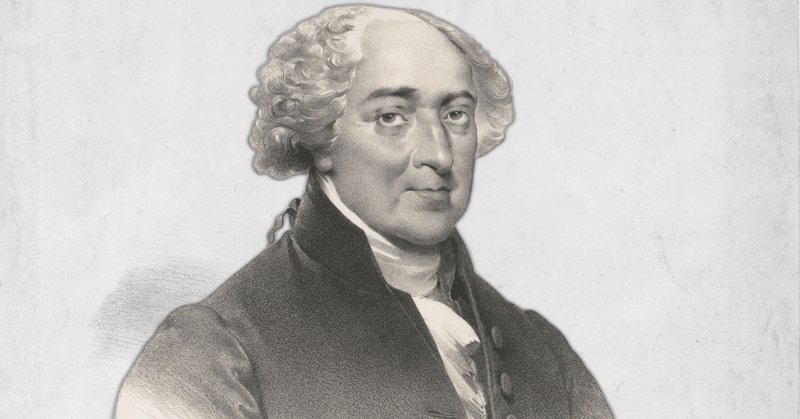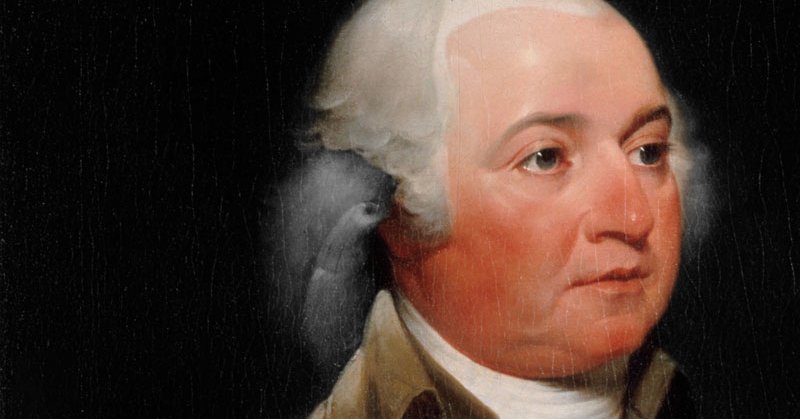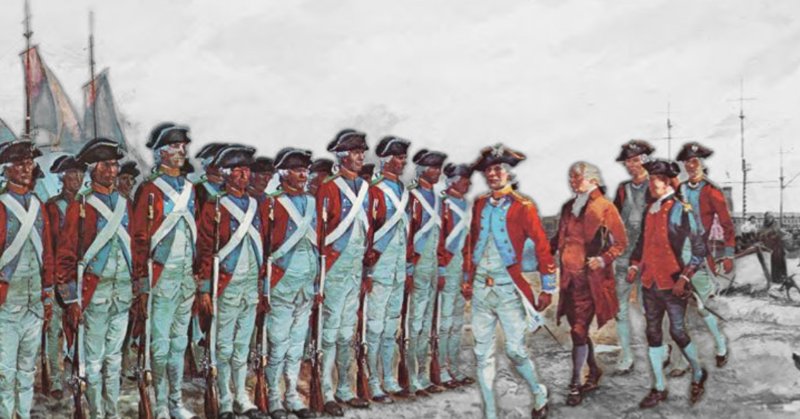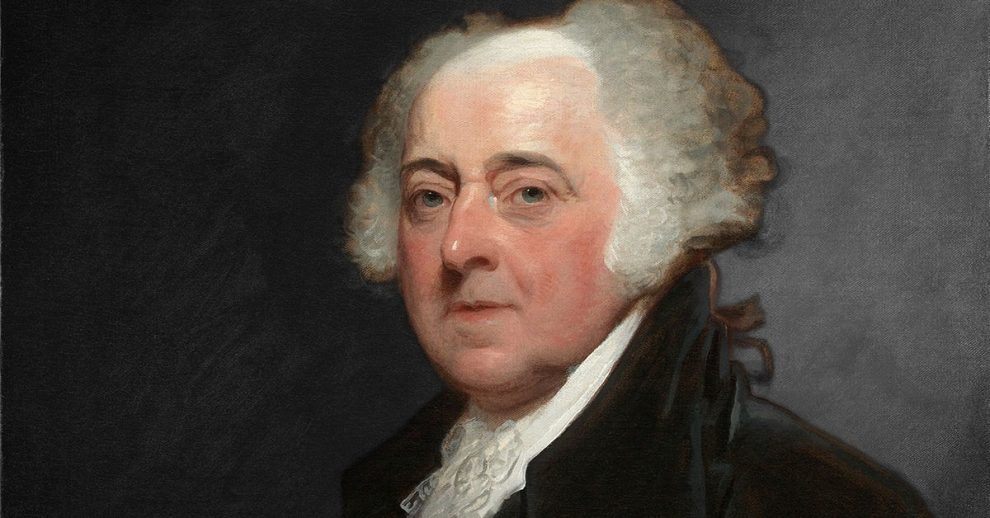John Adams, born on October 30, 1735, in Braintree, Massachusetts, rose from modest beginnings as a farmer’s son to become a lawyer, diplomat, and one of the most influential Founding Fathers. A Harvard graduate with a sharp mind and fiery pen, Adams became an early advocate for independence, defending principles of justice even when it meant representing unpopular causes. He married Abigail Smith in 1764, forging one of history’s most enduring political partnerships, marked by deep affection and intellectual exchange. Together they raised six children, including John Quincy Adams, who would later become the sixth President of the United States. After serving as the nation’s first Vice President and second President, Adams retired to his farm in Quincy. On July 4, 1826—exactly 50 years after the signing of the Declaration of Independence—he died at the age of 90, unaware that his old rival and dear friend Thomas Jefferson had passed away only hours earlier.
Vice Presidency: A Dismissed Role

1. John Adams, the first Vice President of the United States, famously described the vice presidency as “the most insignificant office that ever the invention of man contrived or his imagination conceived.” He served as Vice President from 1789 to 1797 under President George Washington. Adams’s dissatisfaction with the role stemmed from its lack of significant responsibilities and influence.
2. John Adams expressed his deep concern about the potential division of the Republic into two great parties, each led by opposing figures. He stated, “There is nothing I dread so much as a division of the Republic into two great parties, each arranged under its leader and converting measures in opposition to each other.” Despite his fears, the Constitution did not address the formation or regulation of political parties, leaving the issue unresolved.
3. John Adams once wrote under the humorous pseudonym Humphrey Ploughjogger, adopting the persona of a plain New England farmer. He used this alias to publish satirical essays criticizing British policies and warning of the dangers of luxury, idleness, and corruption in colonial America.
4. Before British troops fired on civilians during the Boston Massacre in 1770, an unruly mob had attacked them with oyster shells, ice, stones, and sticks. Future President John Adams defended the soldiers in court, arguing that “prisoners must be judged solely based upon the evidence produced against them in court and nothing else.” His defense led to the acquittal of six soldiers, while two others were convicted of manslaughter and received reduced sentences.
5. After the Boston Tea Party, many Americans, including John Adams, began to view drinking coffee as a patriotic act. The event, which protested British taxation on tea, encouraged colonists to abandon their beloved tea in favor of coffee.
6. In 1796, the United States declared in Article 11 of the Treaty of Tripoli that “the Government of the United States of America is not, in any sense, founded on the Christian religion.” President John Adams signed this treaty into law after the Senate unanimously approved it.
7. Thomas Jefferson paid journalist James Callender to smear John Adams during the election of 1800. Callender accused Adams of having a “hideous hermaphroditical character,” leading to his imprisonment under the Sedition Act. However, Jefferson pardoned Callender once he assumed the presidency in 1801.
8. The Thirteen Colonies legally separated from Great Britain on July 2, 1776. John Adams, future President, wrote, “The second day of July, 1776, will be the most memorable epoch in the history of America.” Nevertheless, Congress did not agree on the language and sign the Declaration of Independence until July 4. Consequently, Adams often declined invitations to July 4 celebrations, believing July 2 was the correct date to honor American independence.
9. Politicians mocked John Adams by nicknaming him “His Rotundity” after he suggested that the president should have a royal-like title. Adams proposed titles such as “His Majesty the President” and “His Highness, the President of the United States of America, and Protector of the Rights of the Same.” This suggestion was met with ridicule.
10. In 1782, the Netherlands loaned 2.5 million dollars to John Adams, who was serving as the American ambassador to the Netherlands. This loan aimed to stabilize the United States following its war of independence. In today’s terms, this amount would be equivalent to approximately 150 billion dollars.
Adams’ Concerns on Governance

11. John Adams believed that while independence and a free government seemed appealing in theory, they posed significant challenges in practice. He worried that in every assembly, members might gain influence through noise rather than sense, and through meanness rather than greatness. Additionally, he feared that ignorance would triumph over learning and that narrow-mindedness would prevail over expansive thinking.
12. George Washington, John Adams, and Thomas Jefferson identified as Christian Deists, holding a belief in God but not in the divinity of Jesus Christ. This perspective was not uncommon among Enlightenment thinkers, who often emphasized reason and ethics over traditional religious doctrines. Their beliefs influenced their approach to governance, favoring a separation of church and state.
13. Thomas Jefferson and John Adams once traveled to Stratford-upon-Avon to visit Shakespeare’s birthplace. During their visit, they carved wood chips from one of Shakespeare’s chairs as souvenirs.
14. Before Washington, D.C. became the capital of the United States, both George Washington and John Adams resided in the President’s House in Philadelphia during their presidencies. Unfortunately, confusion about its historical significance led to its accidental demolition in 1951. A public toilet was later constructed on the site, erasing a piece of early American history.
15. President John Adams had a dog named Satan during his time in the White House.
16. During a diplomatic trip, Ben Franklin and John Adams shared a bed and spent hours bickering over whether to keep the window open or closed.
17. Among the first twelve U.S. Presidents, ten were slave owners. The exceptions were John Adams and his son, John Quincy Adams, who both opposed slavery.
18. Martha Washington lived in a plantation called “The White House,” owned by her first husband, John Custis. The actual White House, completed and first occupied by President John Adams, gained its iconic name when Teddy Roosevelt officially designated it as such.
19. George Washington, John Adams, and Thomas Jefferson brought their personal book collections to the White House and removed them at the end of their terms. It wasn’t until 1850 that Millard and Abigail Fillmore established the first official White House library.
20. Before World War I, the United States adhered to an “anti-interventionist” policy regarding foreign affairs. President John Adams famously stated, “She (America) does not go abroad in search of monsters to destroy.”
Founding Father of the American Navy

21. John Adams is considered the Father of the American Navy, having established it during the Quasi-War, an undeclared conflict between the United States and post-revolutionary France. Despite his strong belief in peace and neutrality, Adams recognized that America needed the capability to defend itself to achieve these goals.
22. In 1798, the 5th U.S. Congress, under President John Adams, mandated health insurance for privately employed sailors. They achieved this by passing the “Act for the Relief of Sick & Disabled Seamen,” which also established the Marine Hospital Service, a government-operated, socialized healthcare system. This legislation marked an early effort to provide organized medical care for American workers.
23. The Sherman Copy of the Declaration of Independence suggests that John Adams may have copied an original document from someone with the initials “T.P.,” possibly indicating Thomas Paine’s involvement in drafting the Declaration. Paine, known for authoring the influential pamphlet “Common Sense,” played a significant role in advocating for American independence.
24. In 1811, John Adams’s daughter, Abigail “Nabby” Adams Smith, was diagnosed with breast cancer. She underwent a mastectomy without anesthesia, a common practice at the time due to the lack of modern anesthetics.
25. John Adams, the second President of the United States, and Thomas Jefferson, his Vice President and the third President, both passed away on July 4, 1826. This date marked exactly 50 years since the signing of the Declaration of Independence. Adams’s last words reportedly were, “Thomas Jefferson still survives,” although Jefferson had died a few hours earlier. Over 49 years, Adams and Jefferson exchanged 329 letters, paused their correspondence for a decade due to political differences, and resumed with 158 more exchanges between 1812 and July 4, 1826.














Add Comment